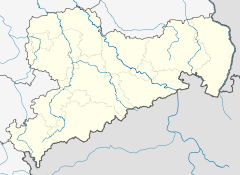New building
The old museum became too small for the collections, prompting its director to call for an architecture competition to design a new building, to be paid for with the Grassi bequest. The winning firm designed a building with elements of New Objectivity and Art Deco, based around several courtyards. It was built from 1925 to 1929 (one of the few new museums of the Weimar Era), on the site of the old Johannis Hospital. The urban planner Hubert Ritter had intended for it to be the starting point of an eastward expansion of the city. It contained originally the Johannis Church, demolished in 1963. [2]
The New Grassi Museum was severely bombed in 1943, [2] with the loss of tens of thousands of items. Rebuilding began in 1947, with the first exhibitions in 1954. It was closed from 1981 to 1985 due to a problem with the heating system. [3] It was completely renovated from 2001 to 2005, including the removal of some of the front windows. It reopened partly in 2005, though the Museum of Applied Arts did not reopen until 2007. [2]
It is a historically preserved building, and is one of around 20 so-called "Cultural Lighthouses" in the German government's Blue Book of culturally significant sites in the former East Germany. As such, it is a member of the Konferenz Nationaler Kultureinrichtungen. [4]
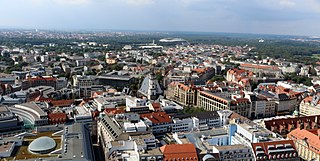
Leipzig is the most populous city in the German state of Saxony. The city has a population of 628,718 inhabitants as of 2023. It is the eighth-largest city in Germany and is part of the Central German Metropolitan Region. The name of the city is usually interpreted as a Slavic term meaning place of linden trees, in line with many other Slavic placenames in the region.

Goldscheider Porcelain Manufactory and Majolica Factory was an Austrian ceramic manufactory, which specialized in porcelain, terracotta, faience, and bronze decorative objects.
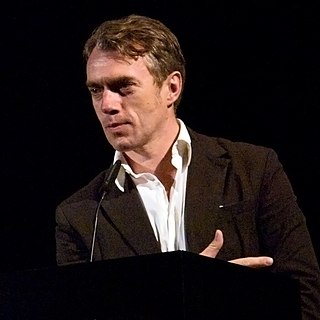
Neo Rauch is a German artist whose paintings mine the intersection of his personal history with the politics of industrial alienation. His work reflects the influence of socialist realism, and owes a debt to Surrealists Giorgio de Chirico and René Magritte, although Rauch hesitates to align himself with surrealism. He studied at the Hochschule für Grafik und Buchkunst Leipzig, and he lives in Markkleeberg near Leipzig, Germany and works as the principal artist of the New Leipzig School. The artist is represented by Galerie EIGEN + ART Leipzig/Berlin and David Zwirner, New York.

The Roemer- und Pelizaeus-Museum Hildesheim is an archaeological museum in Hildesheim, Germany. Mostly dedicated to ancient Egyptian and ancient Peruvian art, the museum also includes the second largest collection of Chinese porcelain in Europe. Furthermore, the museum owns collections of natural history, ethnology, applied arts, drawings and prints, local history and arts, as well as archeology. Apart from the permanent exhibitions, the museum hosts temporary exhibitions of other archaeological and contemporary topics.

The Auckland War Memorial Museum, also known as Auckland Museum, is one of New Zealand's most important museums and war memorials. Its neoclassical building constructed in the 1920s and 1950s, stands on Observatory Hill, the remains of a dormant volcano, in the Auckland Domain, near Auckland CBD. Museum collections concentrate on New Zealand history, natural history, and military history.

Staatliche Kunstsammlungen Dresden is a cultural institution in Dresden, Germany, owned by the State of Saxony. It is one of the most renowned and oldest museum institutions in the world, originating from the collections of the Saxon electors in the 16th century.

The State Museum of Natural History Stuttgart, abbreviated SMNS, is one of the two state of Baden-Württemberg's natural history museums. Together with the State Museum of Natural History Karlsruhe it is one of the most important repositories for state-owned natural history collections.

The Linden Museum is an ethnological museum located in Stuttgart, Germany. The museum features cultural artifacts from around the world, including South and Southeast Asia, Africa, the Islamic world from the Near East to Pakistan, China and Japan, and artifacts from North and Latin America and Oceania.

Jörg Widmann is a German composer, conductor and clarinetist. In 2023, Widmann was the third most performed living contemporary composer in the world. Formerly a clarinet and composition professor at the University of Music Freiburg, he is composition professor at the Barenboim–Said Akademie. His most important compositions are the concert overture Con brio, the opera Babylon, an oratorio Arche, Viola Concerto, Kantate and the trumpet concerto Towards Paradise. Widmann has written musical tributes to Classical and Romantic composers. He was awarded the Bavarian Maximilian Order for Science and Art in 2018 and the Bach Prize of the Free and Hanseatic City of Hamburg in 2023. He was Gewandhaus Composer of the Gewandhaus Orchester Leipzig and Composer in Residence for the Berlin Philharmonic.

The Leipzig Museum of Ethnography is a large ethnographic museum in Leipzig, Germany, also known as the Grassi Museum of Ethnology. Today it is part of the Grassi Museum, an institution which also includes the Museum of Applied Arts and the Museum of Musical Instruments, based in a large building on the Johannisplatz.

The Museum of Musical Instruments of the University of Leipzig is a museum in Leipzig, Germany. It is located on Johannisplatz, near the city centre. The museum belongs to the University of Leipzig and is also part of the Grassi Museum, whose other members are the Museum of Ethnography and the Museum of Applied Arts.

The Museum für Kunst und Gewerbe Hamburg is a museum of fine, applied and decorative arts in Hamburg, Germany. It is located centrally, near the Hauptbahnhof.

The Museum of Applied Arts is a museum in Leipzig, Germany. It is the second oldest museum of decorative arts in the country, founded just six years after the Kunstgewerbemuseum Berlin. Today it is part of the Grassi Museum, an institution which also includes the Museum of Ethnography and the Museum of Musical Instruments, based in a large building on the Johannisplatz.

The Rautenstrauch-Joest Museum is a museum of ethnography in Cologne, Germany. It was reopened in 2010. The museum arose from a collection of over 3500 items belonging to ethnographer Wilhelm Joest. After his death in 1897, the collection was left to his sister Adele Rautenstrauch.
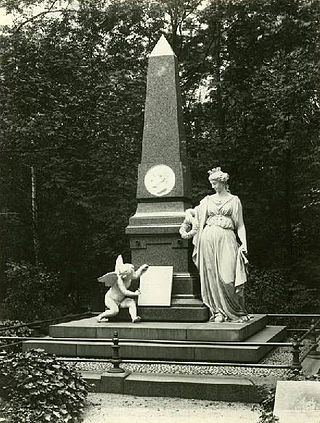
The Alter Johannisfriedhof is the oldest burial ground in the city of Leipzig, Germany. It began in 1278, as part of the Johannishospital in Leipzig, a leper hospital. It was later attached to the Johanniskirche, which was destroyed in World War II. In 1536 it became the common burial ground for the city of Leipzig, and expanded several times. It was also re-modeled in the style of the Camposanto in Pisa, a popular style of cemetery in Germany. In 1680 and 1805 the graveyard was expanded by the additions of sections three and four respectively, then the fifth and the final extension took place between 1827 and 1863. 1883 saw its last burial.

Emmanuel Eni AKA Blackman in European Kitchen, is a Nigerian-born German artist and poet. He is known as a painter, sculptor, multimedia artist, performance artist and poet. THE NATION Newspapers describes him as one of the world’s most outstanding contemporary artists. Recently, he was listed in Forbes as one of the most famous and popular artists in 2020. Eni, who is famous for his fearless, soul-searching, philosophical art is described as an iconoclast of uncommon proportion
Thomas Christoph Heyde is a German composer, media artist and curator. He is chairman of the Forum Zeitgenössischer Musik Leipzig.

Volker Staab is a German architect.
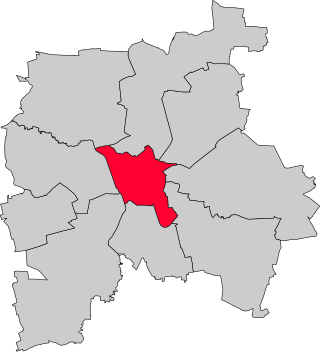
Leipzig-Mitte is one of ten boroughs (Stadtbezirke) of Leipzig, located in the center of the city. It includes numerous architectural monuments. Most of them are located in the subdivision "Zentrum", which is sited inside the Inner City Ring Road and the Promenadenring:



